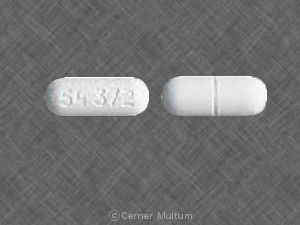Calcium Gluconate Dosage
Medically reviewed by Drugs.com. Last updated on Feb 13, 2025.
Applies to the following strengths: 500 mg; 100 mg/mL; 650 mg; 1000 mg; 1 g/50 mL-NaCl 0.9%; 1 g/100 mL-NaCl 0.9%; 2 g/100 mL-NaCl 0.9%; 1 g/50 mL-D5%; 20 mg/mL-NaCl 0.67%; 1 g/100 mL-NaCl 0.8%; 2 g/50 mL-NaCl 0.9%; 1 g/25 mL-NaCl 0.9%; 1 g/100 mL-D5%; 2 g/100 mL-D5%; 20 g/1000 mL-NaCl 0.9%
Usual Adult Dose for:
Usual Geriatric Dose for:
Usual Pediatric Dose for:
Additional dosage information:
Usual Adult Dose for Hypocalcemia
Initial dose: 1000 to 2000 mg intravenously (IV)
Subsequent doses (as needed):
- IV bolus: 1000 to 2000 mg every 6 hours
- Continuous IV infusion: Initiate at 5.4 to 21.5 mg/kg/hour
Comments:
- Adjust dose based on symptom severity, serum calcium level, and acuity of hypocalcemia onset.
- The safety of long term intravenous use has not been established.
- The injectable product contains 100 mg calcium gluconate per mL, equal to 9.3 mg (0.465 mEq) elemental calcium.
Use: Acute symptomatic hypocalcemia
Usual Adult Dose for Dietary Supplement
Recommended Dietary Allowance (RDA) for elemental calcium:
18 to 50 to years: 1000 mg
51 to 70 years, male: 1000 mg
51 to 70 years, female: 1200 mg
Tolerable Upper Intake Levels (ULs) for elemental calcium:
18 years: 3000 mg
19 to 50 years: 2500 mg
51 and older: 2000 mg
Usual Adult Dose for Hyperkalemia
The National Kidney Foundation recommends:
6.8 mmol calcium (30 mL of calcium gluconate 10% solution) intravenously for membrane potential stabilization
Usual Geriatric Dose for Dietary Supplement
Recommended Dietary Allowance (RDA) for elemental calcium:
51 to 70 years, male: 1000 mg
51 to 70 years, female: 1200 mg
71 years and older:1200 mg
Tolerable Upper Intake Level (UL) for elemental calcium: 2000 mg
Usual Pediatric Dose for Hypocalcemia
Under 1 month:
Initial dose: 100 to 200 mg/kg intravenously (IV)
Subsequent doses (as needed):
- IV bolus: 100 to 200 mg/kg every 6 hours
- Continuous IV infusion: Initiate at 17 to 33 mg/kg/hour
1 month to under 17 years:
Initial dose: 29 to 60 mg/kg intravenously (IV)
Subsequent doses (as needed):
- IV bolus: 29 to 60 mg/kg every 6 hours
- Continuous IV infusion: Initiate at 8 to 13 mg/kg/hour
Comments:
- Adjust dose based on symptom severity, serum calcium level, and acuity of hypocalcemia onset.
- The safety of long term intravenous use has not been established.
- The injectable product contains 100 mg calcium gluconate per mL, equal to 9.3 mg (0.465 mEq) elemental calcium.
Use: Acute symptomatic hypocalcemia
Usual Pediatric Dose for Dietary Supplement
Recommended Dietary Allowance (RDA) for elemental calcium:
0 to 6 months: 200 mg
7 to 12 months: 260 mg
1 to 3 years: 700 mg
4 to 8 years: 1000 mg
9 to 18 years: 1300 mg
Tolerable Upper Intake Levels (ULs) for elemental calcium:
0 to 6 months: 1000 mg
7 to 12 months: 1500 mg
1 to 8 years: 2500 mg
9 to 18 years: 3000 mg
Renal Dose Adjustments
Use with caution.
- Initiate at the lowest recommended dose for the age; measure serum calcium every 4 hours during intravenous administration.
Liver Dose Adjustments
No adjustment recommended.
Precautions
CONTRAINDICATIONS:
- Hypercalcemia
- Neonates (28 days or younger) receiving ceftriaxone
Consult WARNINGS section for additional precautions.
Dialysis
Data not available
Other Comments
Administration advice:
- Administer intravenous (IV) solution via a secure line to avoid calcinosis cutis and extravasation.
- The IV solution should be clear and colorless to slightly yellow; do not use if cloudy or discolored.
- Bolus IV administration: Dilute dose to a 10 to 50 mg/mL concentration; administer slowly (max 200 mg/min in adults and 100 mg/min in children); monitor patient, vitals, and electrocardiograph (ECG) during administration:
- Continuous IV infusion: Dilute dose to a 5.8 to 10 mg/mL concentration; administer at correct rate for age; monitor patient, vitals, and ECG during administration.
Reconstitution/preparation techniques:
- Dilute IV solution in 5% dextrose or 0.9% sodium chloride.
- Use diluted solution immediately after preparation.
IV compatibility:
- Incompatible with ceftriaxone; ceftriaxone-calcium precipitates may occur.
- Incompatible with fluids containing bicarbonate or phosphate; precipitation may occur.
- Incompatible with minocycline; calcium complexes minocycline, inactivating it.
Monitoring:
- Measure serum calcium every 1 to 4 hours during intravenous administration.
More about calcium gluconate
- Check interactions
- Compare alternatives
- Pricing & coupons
- Drug images
- Side effects
- During pregnancy
- Drug class: minerals and electrolytes
- En español
Patient resources
Professional resources
Related treatment guides
See also:
Further information
Always consult your healthcare provider to ensure the information displayed on this page applies to your personal circumstances.


